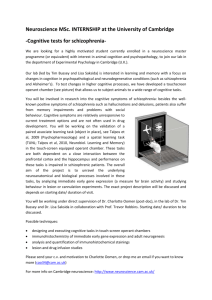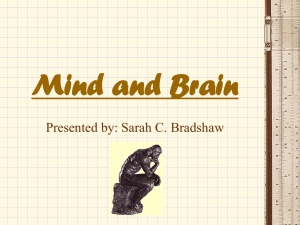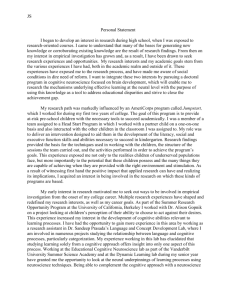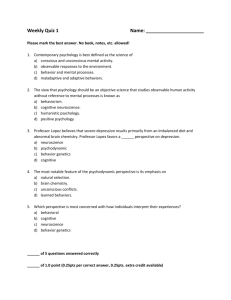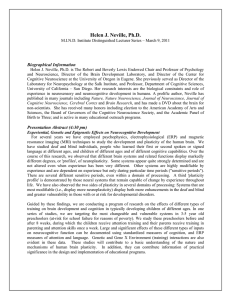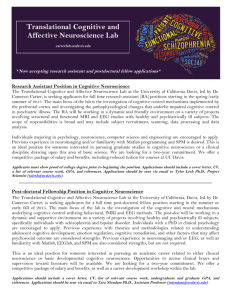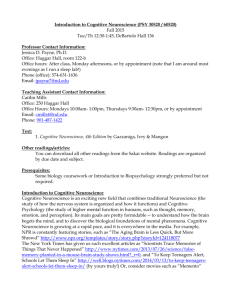Cognitive Neuroscience Final Exam
advertisement
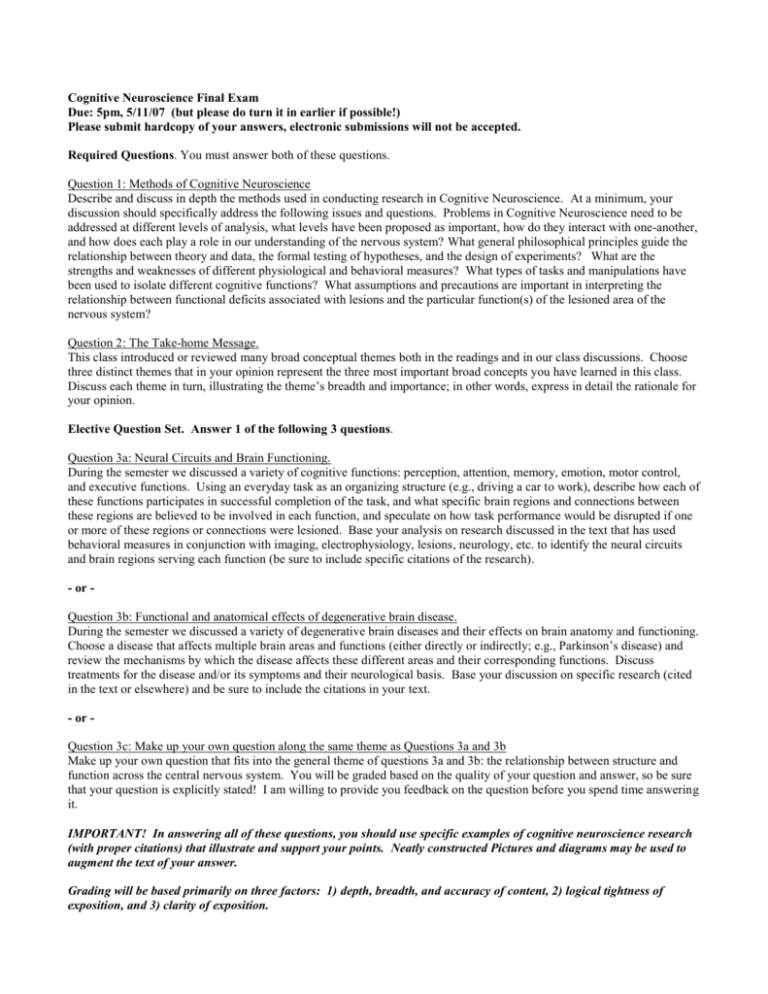
Cognitive Neuroscience Final Exam Due: 5pm, 5/11/07 (but please do turn it in earlier if possible!) Please submit hardcopy of your answers, electronic submissions will not be accepted. Required Questions. You must answer both of these questions. Question 1: Methods of Cognitive Neuroscience Describe and discuss in depth the methods used in conducting research in Cognitive Neuroscience. At a minimum, your discussion should specifically address the following issues and questions. Problems in Cognitive Neuroscience need to be addressed at different levels of analysis, what levels have been proposed as important, how do they interact with one-another, and how does each play a role in our understanding of the nervous system? What general philosophical principles guide the relationship between theory and data, the formal testing of hypotheses, and the design of experiments? What are the strengths and weaknesses of different physiological and behavioral measures? What types of tasks and manipulations have been used to isolate different cognitive functions? What assumptions and precautions are important in interpreting the relationship between functional deficits associated with lesions and the particular function(s) of the lesioned area of the nervous system? Question 2: The Take-home Message. This class introduced or reviewed many broad conceptual themes both in the readings and in our class discussions. Choose three distinct themes that in your opinion represent the three most important broad concepts you have learned in this class. Discuss each theme in turn, illustrating the theme’s breadth and importance; in other words, express in detail the rationale for your opinion. Elective Question Set. Answer 1 of the following 3 questions. Question 3a: Neural Circuits and Brain Functioning. During the semester we discussed a variety of cognitive functions: perception, attention, memory, emotion, motor control, and executive functions. Using an everyday task as an organizing structure (e.g., driving a car to work), describe how each of these functions participates in successful completion of the task, and what specific brain regions and connections between these regions are believed to be involved in each function, and speculate on how task performance would be disrupted if one or more of these regions or connections were lesioned. Base your analysis on research discussed in the text that has used behavioral measures in conjunction with imaging, electrophysiology, lesions, neurology, etc. to identify the neural circuits and brain regions serving each function (be sure to include specific citations of the research). - or Question 3b: Functional and anatomical effects of degenerative brain disease. During the semester we discussed a variety of degenerative brain diseases and their effects on brain anatomy and functioning. Choose a disease that affects multiple brain areas and functions (either directly or indirectly; e.g., Parkinson’s disease) and review the mechanisms by which the disease affects these different areas and their corresponding functions. Discuss treatments for the disease and/or its symptoms and their neurological basis. Base your discussion on specific research (cited in the text or elsewhere) and be sure to include the citations in your text. - or Question 3c: Make up your own question along the same theme as Questions 3a and 3b Make up your own question that fits into the general theme of questions 3a and 3b: the relationship between structure and function across the central nervous system. You will be graded based on the quality of your question and answer, so be sure that your question is explicitly stated! I am willing to provide you feedback on the question before you spend time answering it. IMPORTANT! In answering all of these questions, you should use specific examples of cognitive neuroscience research (with proper citations) that illustrate and support your points. Neatly constructed Pictures and diagrams may be used to augment the text of your answer. Grading will be based primarily on three factors: 1) depth, breadth, and accuracy of content, 2) logical tightness of exposition, and 3) clarity of exposition.


